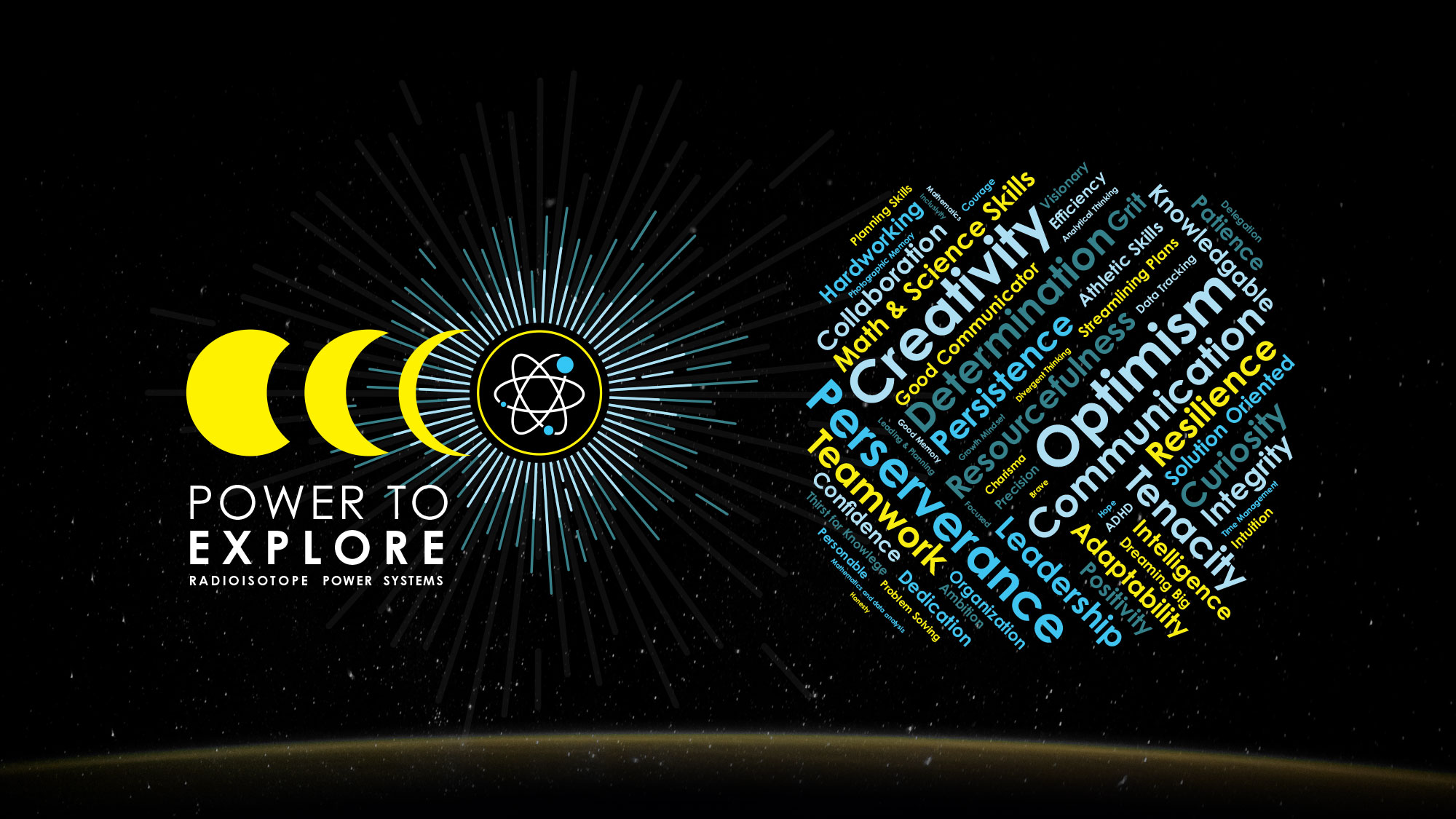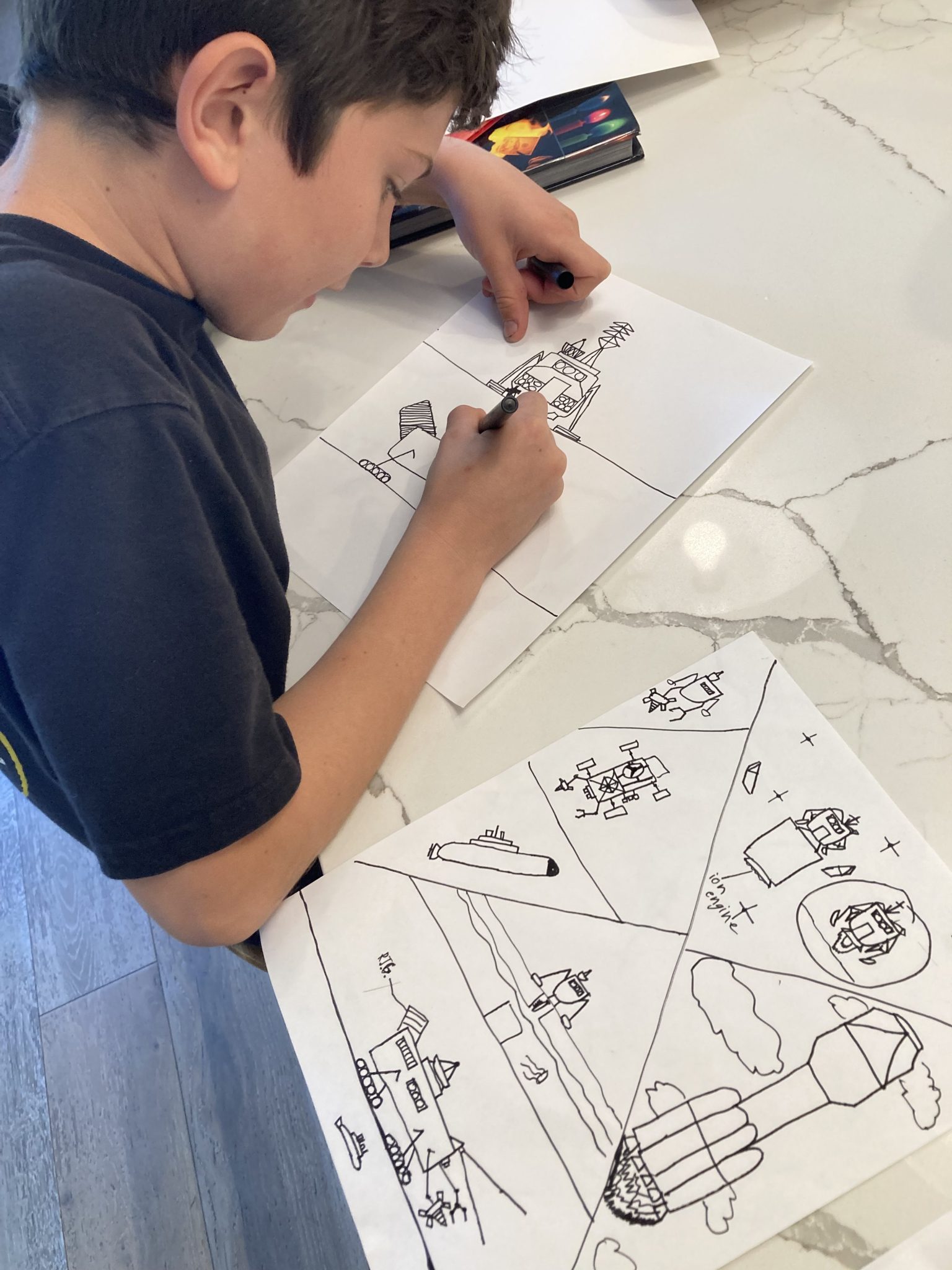
NASA selected 45 student essays as semifinalists of its 2024 Power to Explore Challenge, a national competition for K-12 students featuring the enabling power of radioisotopes. Contestants were challenged to explore how NASA has powered some of its most famous science missions and to dream up how their personal “superpower” would energize their success on their own radioisotope-powered science mission. The competition asked students to learn about Radioisotope Power Systems (RPS), “nuclear batteries” that NASA uses to explore the harshest, darkest, and dustiest parts of our solar system. RPS have enabled many spacecraft to conduct otherwise impossible missions in total darkness.
In 250 words or less, students wrote about a mission of their own that would use these space power systems and described their own power to achieve their mission goals. The challenges of space exploration without solar power are especially relevant ahead of the United States’ upcoming April 8 total solar eclipse, which will offer a momentary glimpse into what life would be like without sunlight.
The Power to Explore Challenge offered students the opportunity to learn more about these reliable power systems, celebrate their own strengths, and interact with NASA’s diverse workforce. This year’s contest received 1,787 submitted entries from 48 states and Puerto Rico.
“It has been so exciting to see how many students across the nation have submitted essays to NASA’s Power to Explore Challenge,” said Carl Sandifer, program manager of the Radioisotope Power Systems Program at NASA’s Glenn Research Center in Cleveland. “We have been thrilled to read their creative RPS-powered mission concepts and have been inspired learning about their many ‘superpowers’ that make them the bright future of NASA – the Artemis Generation.”
Entries were split into three categories: grades K-4, 5-8, and 9-12. Every student who submitted an entry received a digital certificate, and over 4,094 participants who signed up received an invitation to the Power Up virtual event. With NASA’s Associate Administrator for the Science Mission Directorate Nicola Fox, NASA’s Radioisotope Power Systems Program Manager Carl Sandifer, and Kim Rink of NASA’s Jet Propulsion Laboratory in
We have been thrilled to read their creative RPS-powered mission concepts and have been inspired learning about their many ‘superpowers’ that make them the bright future of NASA – the Artemis Generation.

Carl Sandifer
Program Manager, Radioisotope Power Systems Program.
Southern California, students learned about what powers the NASA workforce to dream big and work together to explore.
Fifteen national semifinalists in each grade category (45 semifinalists total) have been selected. These participants also will receive a NASA RPS prize pack. Finalists for this challenge will be announced on April 8 in celebration of the total solar eclipse.

Semifinalists: Grades K-4
- Maryam Asif, Sarasota, FL
- Thashvi Balaji, Riverview, FL
- Yavuz Bastug, Peckville, PA
- Claire Bennett, La Grange, NC
- Ada Brolan, Somerville, MA
- Joseph Brown, Huntsville, AL
- Ashwin Cohen, Washington, D.C.
- Adara George, Lithia, FL
- Katerine Leon, Long Beach, CA
- Rainie Lin, Lexington, KY
- Connor Personette, Lakeland, FL
- Yash Rajan, Issaquah, WA
- Camila Rymzo, Belmont, MA
- Arslan Soner, Columbia, SC
- Zachary Tolchin, Guilford, CT
Semifinalists: Grades 5-8
- Nithilam Arivuchelvan, Short Hills, NJ
- Nandini Bandyopadhyay, Short Hills, NJ
- Cooper Basi, Rocklin, CA
- Joshua Cheng, Rockville, MD
- Kaitlyn Chu, Mercer Island, WA
- Mayson Howell, Troy, MO
- Dhiraj Javvadi, Louisville, KY
- Aadya Karthik, Redmond, WA
- Subham Maiti, Bloomington, MN
- Meadow McCarthy, Corvallis, OR
- Elianna Muthersbaugh, Bluffton, SC
- Archer Prentice, Koloa, HI
- Andrew Tavares, Bridgewater, MA
- Sara Wang, Henderson, NV
- Anna Yang, Austin, TX
Semifinalists: Grades 9-12
- Sabrina Affany, Fresno, CA
- Alejandro Aguirre, Mission Viejo, CA
- Sai Meghana Chakka, Charlotte, NC
- Khushi Jain, San Jose, CA
- Aiden Johnson, Virginia Beach, VA
- Robert Kreidler, Cincinnati, OH
- Zoie Lawson, Tigard, OR
- Thomas Liu, Ridgewood, NJ
- Madeline Male, Fairway, KS
- Dang Khoi Pham, Westminster, CA
- Sofia Anna Reed-Gomes, Coral Gables, FL
- Ava Schmidt, Leavenworth, WA
- Madden Smith, Loveland, OH
- Kailey Thomas, Las Vegas, NV
- Warren Volles, Lyme, CT

About the Challenge
The challenge is funded by the Radioisotope Power Systems Program Office in NASA’s Science Mission Directorate and administered by Future Engineers under the NASA Open Innovation Services 2 contract. This contract is managed by the NASA Tournament Lab, a part of the Prizes, Challenges, and Crowdsourcing Program in NASA’s Space Technology Mission Directorate.
Kristin Jansen
NASA’s Glenn Research Center








